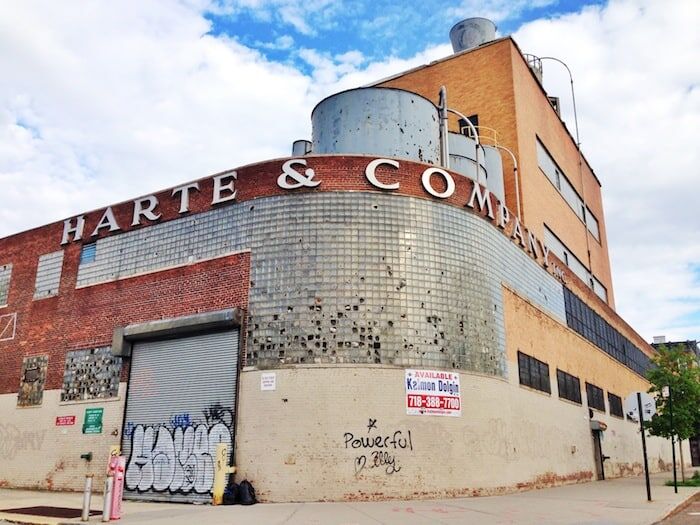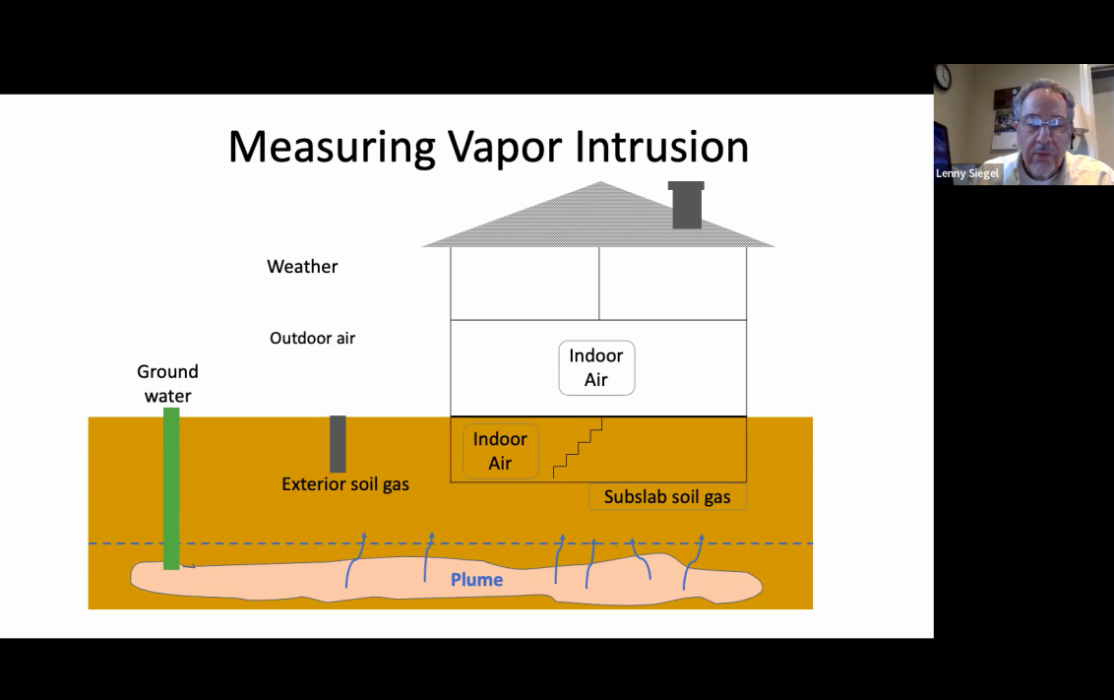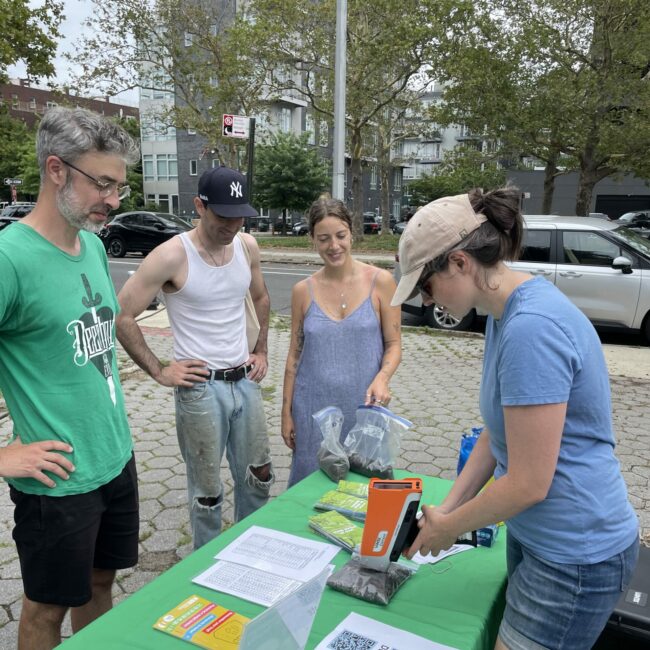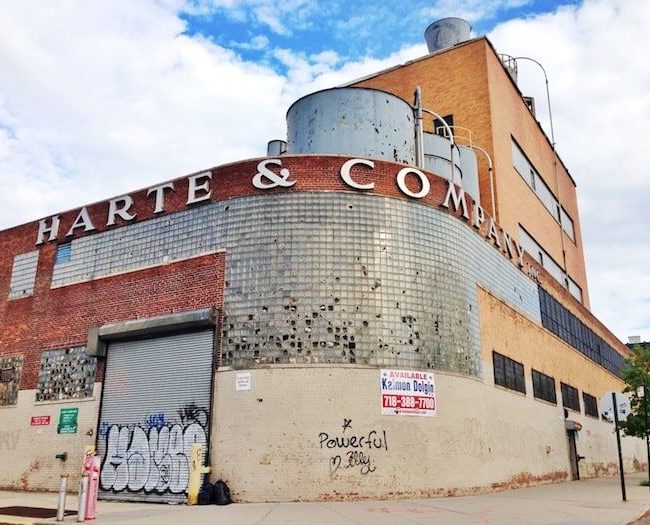Sites of Concern: Public Spaces Soil Testing
January 2020 to present
Over the years, soil testing has continually found high levels of lead in North Brooklyn soils. In order to get a deeper understanding of the levels of toxicity, NBN sampled as many publicly accessible open spaces within Brooklyn Community District 1. Soil was tested for a variety of heavy metals in addition to lead.
The results confirmed that in many public spaces, soil is contaminated with a variety of heavy metals, the most concerning being the ubiquitous levels of lead and arsenic. Contamination is found throughout North Brooklyn open spaces, though some spaces have higher levels of pollutants and are more problematic than others. McCarren Park, in particular, has some of the highest levels of arsenic and lead found anywhere in the district. Further details about the soil sampling and results are detailed in our report.
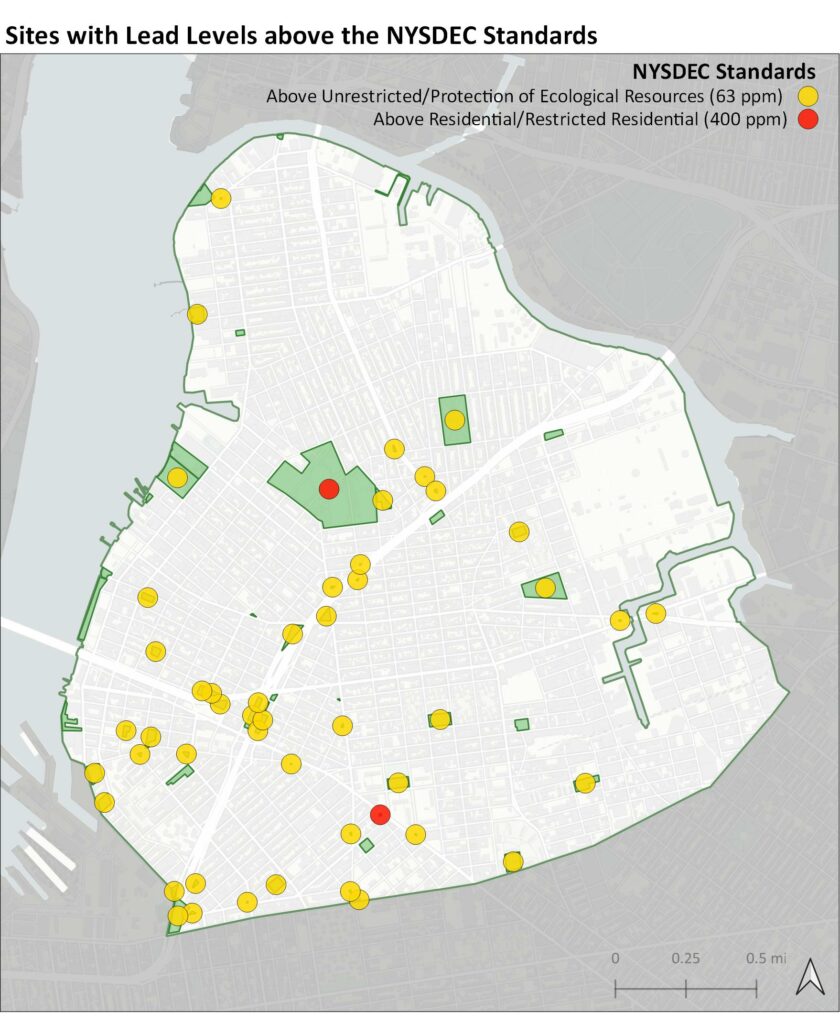
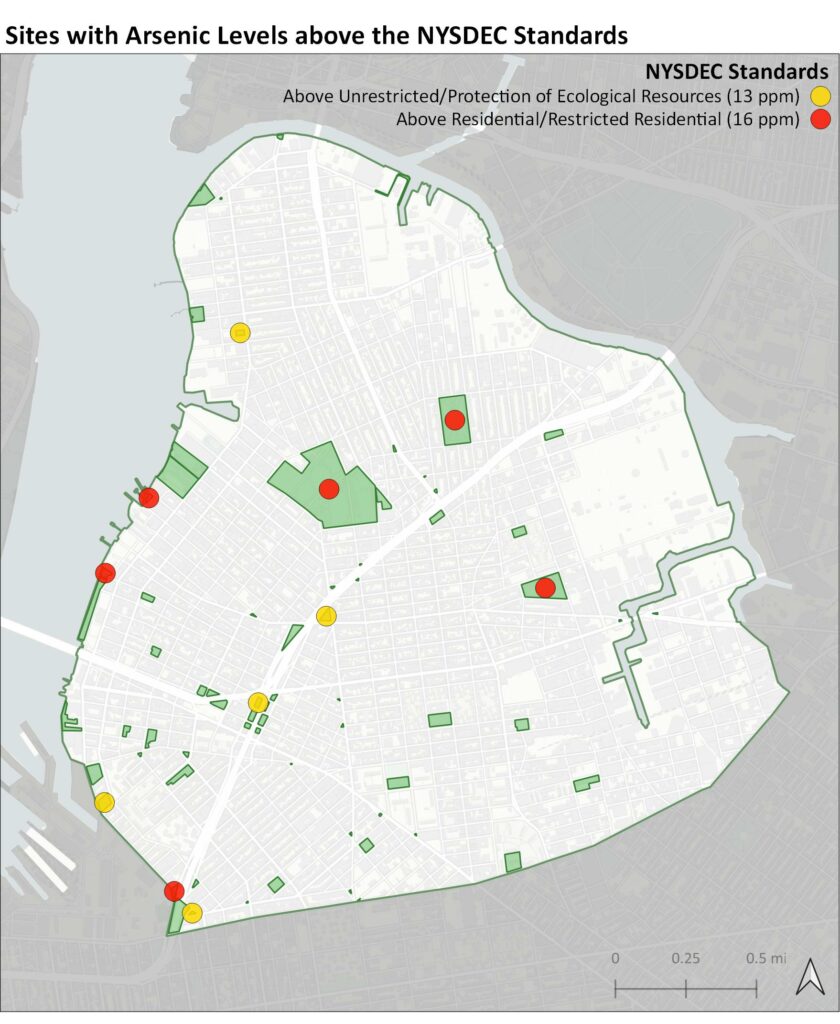
maps created by Laura Hechtlinger
In general, levels of lead and arsenic in the soils of open spaces in North Brooklyn are higher than desired for public safety. This random sampling has turned up numerous sites where levels exceed state recommendations. It also has uncovered specific areas of potential concern with other elements worth further study, particularly chromium.
It is our hope that this report will spur action in the following ways:
- The findings from this report should encourage city leaders to further investigate contamination in our public open spaces and to help prioritize the distribution of any park investments to those parks which have been shown to have the most contamination in combination with the highest usage for the most vulnerable populations. McCarren Park in particular is both a heavily used open space and the samples taken from the park were some of the most problematic and immediate action should be prioritized.
- Increase budget for open space care and management. Soil that is under heavy wood chips, regularly has compost added, or is under some other sort of ground cover such as grass, protects (to some degree) humans and animals alike from exposure.
- Better design of open spaces with planning as to which areas should be accessed by children and which should be off-limits to protect and grow vegetation.
- When undergoing capital investments, redesign and invest in parks to both provide a full range of ecosystem services and to ensure that contaminated soil is properly cared for and covered. This report is NOT a recommendation to simply cover (i.e.,brick or concrete) over all exposed soil in the neighborhood. Instead, thoughtful planning about how open spaces can serve the community in terms of extreme weather events, such as precipitation and heat need to be balanced with ensuring children in particular are protected from contaminated soils.
- As extreme heat events are predicted to continue and increase in the coming years, one method of combating the urban heat island effect is to replace concrete with vegetation. Yet patchy grass or plantings with bare soil could increase exposure to soil contaminants. As NYC invests in open spaces, it is important to consider how to increase vegetation and greening initiatives, while also ensuring soil remains covered.
- Parents and caregivers should be aware of not only which open spaces are contaminated with toxic metals, but also to seek out locations for play with covered soils. Spreading a blanket on the ground when near exposed soil for a picnic, wiping down hands after playing and before eating, and keeping children away from exposed soil generally are all good practices for reducing chances of contamination.
- Dog owners should take heed as pets track soil from open spaces into the home environment. Wiping a dog’s paws will reduce contaminants in the house, which is especially important when the household contains young children.
For more information, download the report or dig into the data.
Sites-of-Concern-Soil